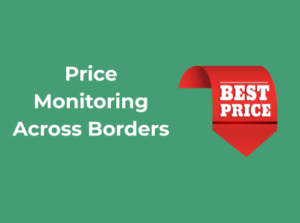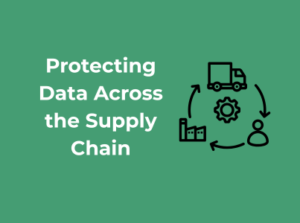Ever wondered why your favorite dish at a restaurant tastes so good and, perhaps, costs what it does? One of the biggest factors comes down to what’s on your plate—literally. Let’s dive into how restaurants navigate the world of ingredient costs to bring you meals worth savoring!
The Journey Begins at the Farm
Ingredients have a story that starts long before they reach the kitchen. Whether it’s fruits, vegetables, meats, or grains, these foods are typically sourced directly from farms or food suppliers. Prices at this stage vary based on several factors:
- Seasonality: Ever noticed strawberries are cheaper in summer? That’s because they’re in season and more abundant. Off-season ingredients often drive up the cost for restaurants.
- Supply Chain Challenges: Natural disasters, droughts, or global events can disrupt supply, pushing prices higher for imported or regional goods.
- Local vs. Imported: Sourcing locally can reduce transportation costs but may not always provide the variety or quantity restaurants need. Imported goods, on the other hand, often bring unique flavors… alongside higher price tags.
Bulk Buying: Advantage or Challenge?
Restaurants often purchase ingredients in bulk to save money. This sounds straightforward, but it requires precise planning. Buying too little could lead to shortages, while over-purchasing may result in wastage, especially with perishable items. Striking the perfect balance becomes a key behind-the-scenes skill for kitchen managers.
The Role of Quality
Let’s talk quality. Diners today are paying more attention to what they eat. Organic vegetables, grass-fed beef, artisanal cheeses—premium choices come at a cost. Restaurants must weigh whether better-quality ingredients justify the higher price tag. For eateries daring to elevate your dining experience, ingredient quality becomes a direct investment in customer satisfaction.
Hidden Costs in Food Prep
Once an ingredient hits the kitchen, there are additional “hidden” costs to consider! Did you know:
- Trimming and Waste: That whole fish? Only part of it becomes the filet you’re enjoying. Raw materials usually require trimming, peeling, or cutting, which adds to the effective cost.
- Storage: Freezers, refrigerators, and pantry shelves are essential investments for keeping ingredients fresh. Managing inventory to prevent spoilage is a science in itself.
Balancing Costs Without Sacrificing Experience
It’s a balancing act: restaurants must maintain a menu that’s both exciting and cost-effective. That’s why you might see ingredients rotated seasonally or substituted with local options. And sometimes, creative recipes—like using carrot tops for pesto—are born out of an effort to reduce waste while wowing diners.

Staff Salaries and Benefits: The Quiet Cornerstone of Restaurant Finances
Running a restaurant is as much about the people behind the counter as it is about the food on the table. While customers often rave about the chef’s signature dishes or the cozy atmosphere, one essential piece of the puzzle quietly takes center stage for restaurant owners: staff salaries and benefits. Believe it or not, your team is not just an expense—it’s an investment that can either make or break your business.
The Real Cost of Keeping a Stellar Team
When you think about staff costs, you might immediately picture paychecks. Yes, wages and salaries are a big slice of the pie, but there’s more. From health insurance to paid time off, benefits are equally critical—not just for compliance purposes, but also for retaining top talent in a highly competitive industry. The restaurant turnover rate is notoriously high. Want to keep your best barista or that charismatic server every customer loves? Investing in their well-being pays dividends in customer satisfaction and business stability.
Breaking Down the Numbers
On average, labor costs for restaurants range between 20% and 35% of total revenue, depending on the type of establishment and service model (e.g., fine dining vs. quick-service). But it’s not just about throwing money into a staffing black hole. Smart labor management is key to keeping this cost sustainable. Here are some guiding principles:
- Scheduling wisely: Use historical data to track busy hours and staff accordingly. Overstaffing leads to wasted resources, while understaffing discourages repeat customers.
- Cross-training staff: A dynamic team that can switch roles (e.g., hosting, serving, or bartending) reduces the need to hire excessive personnel and aids in smoother operations during peak hours.
- Tracking labor costs as a percentage of sales: This metric ensures you’re not overspending on staff relative to what the restaurant brings in. Tools like POS systems make this tracking easier than ever.
Why Benefits Are Worth It
“Benefits” might seem like a fancy word for additional expenses, but let’s flip the perspective. By offering perks like healthcare coverage, retirement plans, or even something as simple as a meal during their shift, you foster loyalty, improve employee morale, and reduce turnover. High staff turnover doesn’t just cost time—it’s expensive to recruit, hire, and train new employees. Long-term staff provide consistency, and regular patrons love seeing familiar faces when they walk through the door.
You don’t need to break the bank on benefits, either. Consider smaller incentives like discounts on food for their families, recognition programs, or flexible scheduling. A little effort goes a long way in showing your team they’re valued.
The “Hidden” Labor Costs
Think labor costs begin and end with wages? Think again. Employers also foot the bill for taxes, including payroll taxes, unemployment insurance, and workers’ compensation. These “hidden” costs can sneak up if you’re not prepared for them. Keeping meticulous records of your payroll and understanding your legal obligations ensures there are no surprises down the road.
Rent, Utilities, and Overhead Expenses: Keeping the Lights On
When it comes to running a successful restaurant, it’s easy to get caught up in the more exciting aspects, like crafting the perfect menu or building a stellar team. But behind every thriving dining establishment are the not-so-glamorous costs of keeping the lights on—literally. Rent, utilities, and overhead expenses form the foundation of restaurant operations. Let’s break down how these costs can impact your bottom line and why they deserve just as much attention as your recipe book does.
Rent: The Backbone of Your Brick-and-Mortar
In the restaurant business, location is everything. Unfortunately, a prime spot often comes with a hefty price tag. Rent is typically one of the largest expenses a restaurant faces, and its impact can’t be overstated. Securing a space in a bustling downtown area or a trendy neighborhood might bring in foot traffic, but it also demands careful financial planning.
Negotiate your lease terms wisely. Signing a long-term lease might provide stability, but it also limits your flexibility if market conditions change. Be sure to consider not just the total rent, but also “hidden” costs, such as property taxes or common area maintenance (CAM) fees. Always build out financial projections to ensure you aren’t biting off more than you can chew in your monthly payments.
Utilities: Turning on the Heat, Literally
Your restaurant’s kitchen isn’t just hot in terms of its food offerings—it’s likely a big part of your utility costs, too. Depending on your location, utilities such as electricity, gas, and water can quickly become major expenses. Commercial kitchens rely heavily on power-intensive equipment like ovens, refrigerators, and ventilation systems, and it all adds up fast.
One major cost-saving tip? Go energy-efficient. Many modern appliances are designed to conserve power without sacrificing performance. Plus, some cities and states offer tax deductions or rebates for businesses that adopt sustainable practices. Simple changes like switching to LED lighting or maintaining your appliances regularly can also result in noticeable monthly savings.
Other Overhead Costs: Beyond the Basics
Rent and utilities may grab the spotlight, but other overhead expenses play important supporting roles. Insurance, permits, and property maintenance are all recurring costs, and they’re not ones you can cut corners on.
- Insurance: Whether it’s liability coverage, fire insurance, or workers’ comp, you’ll need comprehensive insurance plans to protect your business.
- Permits: Health and safety permits are non-negotiable in the restaurant industry. Regular inspections ensure compliance but can also come with renewal fees.
- Repairs and maintenance: From leaking roofs to clogged drains, unexpected expenses can derail your budget if you’re not prepared. Creating an emergency fund for these kinds of repairs is a smart move.
Kitchen Equipment and Maintenance Costs: Beyond the Initial Investment
When we think about restaurant costs, kitchen equipment is often considered one-and-done. Buy a stove, a fryer, a fridge, and you’re set for years, right? Wrong! The reality of kitchen equipment costs is much more nuanced. As any seasoned restaurateur will tell you, it’s not just about slapping down the cash to acquire top-tier appliances. It’s also about maintaining them, upgrading when necessary, and sometimes, replacing a workhorse when it decides its time is up—usually on the busiest night of the year!
It Starts with the Initial Investment
Let’s talk about the up-front costs. Outfitting a professional kitchen with the essentials can easily run into tens of thousands of dollars—or more, depending on the concept and scale of your restaurant. Here’s a quick list of must-haves:
- Cooking equipment: From ovens and grills to fryers and stovetops, this is the heart of any kitchen.
- Refrigeration: Walk-in coolers, freezers, and under-counter fridges are essential to managing perishable items.
- Prep stations: Worktables, cutting boards, mixers, and slicers make daily food preparation efficient.
- Dishwashing units: Clean dishes are non-negotiable for any operation!
While buying used or refurbished equipment can save costs, it comes with risks. You’ll have to balance the budgetary benefits with the potential expense of quicker wear and tear down the road. Pro tip: Always consider warranties and service agreements when making a purchase. They might feel unnecessary at the moment, but they can save you from major headaches later!
Maintenance: Where the Real Work Lies
Here’s a fact: even the best equipment isn’t built to last forever without a little TLC. Regular maintenance is key to ensuring long-term functionality and safety. Skimping on maintenance costs might save you money in the short term but could lead to costly breakdowns or replacements sooner than you’d like.
Think of it as scheduling a doctor’s visit for your equipment. For example:
- Periodically clean and descale your steamers and coffee machines to prevent build-up.
- Ensure proper ventilation for stoves and fryers to avoid heat overload or even fire hazards.
- Keep refrigerator and freezer seals intact to maintain efficient cooling and prevent spoiled inventory.
It’s worth building a relationship with a trusted equipment repair service. Having someone on speed dial who knows their way around your appliances can save precious time and mitigate downtime when something inevitably breaks.
Budget for the Unexpected
No matter how well-prepared you are, every restaurateur has at least one horror story where a key piece of equipment decides to quit mid-dinner rush. These moments underline the importance of having an emergency fund or a line in your budget specifically for equipment breakdowns.
One smart move? Plan regular equipment reviews to identify signs of deterioration before a full-blown failure occurs. You might spot, say, a burner that doesn’t heat as evenly anymore or a dishwasher that’s getting noisier by the day. A little foresight can keep these manageable issues from becoming mountain-sized headaches.
Thinking Long-Term
Finally, factor long-term equipment upgrades into your financial plans. Technology and industry standards are always evolving. Trends like energy-efficient appliances and smart kitchen technology not only save on utilities but can pay for themselves in efficiency and output in the years ahead.
Marketing and Customer Outreach: The Key to a Packed Restaurant
Running a restaurant doesn’t just mean creating delicious food and having excellent service. It also means making sure people know about your offerings and enticing them to visit. Marketing and customer outreach are critical for filling seats, building a loyal customer base, and staying ahead in a competitive industry. Let’s dive into what marketing really entails for a restaurant and how you can approach it effectively, step by step.
Why Marketing Matters
Imagine you’ve set up the coziest dining environment and perfected your recipes, yet week after week, you’re looking at empty tables. This can happen if your potential customers don’t know you exist or are tempted away by competitors with stronger marketing strategies. Effective outreach bridges the gap between your restaurant and your audience, creating awareness, drawing traffic, and — most importantly — converting curious diners into loyal regulars.
Breaking It Down: Types of Marketing Strategies
There’s no one-size-fits-all for restaurant marketing, so blending several approaches will yield the best results. Here are some common strategies restaurants use to attract hungry diners:
- Social Media Marketing: Platforms like Instagram, Facebook, and TikTok are goldmines for restaurants. Share drool-worthy photos of your dishes, behind-the-scenes sneak peeks of the kitchen, or live streams of special events. Build a consistent voice and engage with your followers.
- Email Campaigns: Start building your email list by offering dine-in discounts or exclusive news. Weekly newsletters can highlight specials, promote events, or share feel-good stories about your staff or ingredients.
- Paid Advertising: Boost visibility with strategic investments in Google ads, social media sponsorships, or local newspaper advertisements using a Social media post generator. If done right, even small ads can produce big returns.
- Loyalty Programs: Reward regulars with special perks or discounts. Word-of-mouth from happy customers is free marketing that pays dividends!
- Partnering Locally: Collaborate with nearby businesses or host events to build relationships within your community. For example, sponsoring a local charity can elevate your reputation while attracting new customers.
Allocating Your Marketing Budget
One of the biggest questions restaurant owners face is how much to spend on marketing. Many experts suggest setting aside about 3-6% of your total revenue for marketing efforts. However, this can vary depending on your goals. A new restaurant might need to spend more upfront to build visibility, while an established business might maintain a steady, moderate budget to retain its audience.
Tracking where every dollar goes is also crucial. Regularly assess which strategies are yielding the best returns. For example, your Instagram ads might be driving significant traffic, while a local print ad barely moves the needle. Adjust your plan accordingly to maximize impact.
Measuring the Success of Your Efforts
Marketing isn’t just about throwing ideas at the wall to see what sticks; it’s about consistently examining the data. Use tools like Google Analytics, social media insights, or even point-of-sale systems to track campaign performance. Ask questions like:
- How many reservations can be traced back to your recent social media post?
- Did your new loyalty program result in a significant increase in repeat customers?
- Are guests mentioning your special offers or events when they call to book?
Metrics like website traffic, engagement rates, and customer feedback can help refine your outreach and show where your time and money are best spent.
Storytelling: The Secret Ingredient
The most successful restaurant marketing campaigns are often about more than just food — they tell a story. People connect deeply with authenticity. For example, showcase the journey of how your dishes are prepared, highlight the farmers you partner with, or share your chef’s culinary inspiration. When people feel emotionally invested in your restaurant, they’re far more likely to walk through the door.
The Hidden Tech Bill: Unveiling Restaurant Technology Costs
In today’s digital age, running a restaurant without integrating some form of technology is almost unheard of. While these tools promise streamlined operations and enhanced customer experiences, they come with a hidden price tag that can quietly eat into your budget. Let’s break down these expenses, one byte at a time!
Understanding Restaurant Technology: The Essentials
Technology in the restaurant industry goes far beyond a slick website or a social media presence. It includes tools like:
- Point-of-Sale (POS) Systems: These are the backbone of modern restaurants, managing everything from orders and inventory to sales analytics. While incredibly useful, they often come with a hefty upfront cost or a recurring subscription fee.
- Online Ordering Platforms: With the rise of takeout and delivery culture, having an integrated online ordering system is essential. However, these platforms often charge commissions or subscription rates that can significantly impact profits.
- Reservation and Table Management Tools: Solutions that help optimize seating and reduce wait times are great for customers, but license fees can add up quickly over the year.
- Employee Scheduling Software: Gone are the days of scribbled shift schedules. Software tools make staff management easier, but they also come with a recurring cost.
- Kitchen Display Systems (KDS): These systems digitize and streamline communication between the front-of-house and back-of-house, improving efficiency. Their initial cost and maintenance expenses, however, are worth noting.
The Subscription Era: Why Does It All Add Up?
One common trend is the shift from one-time purchases to subscription-based pricing models. This may seem affordable at first glance, but as you stack multiple tools together—POS systems, marketing platforms, CRM software—it quickly becomes an ongoing financial burden.
The key advice here? Periodically audit your subscriptions. Are you paying for things you rarely use? Can some tools overlap in functionality? Being mindful and strategic about what you’re subscribing to can save you hundreds, if not thousands, of dollars annually.

Understanding Miscellaneous Charges: The Small Costs That Sneak Up
When you’re running a business, especially a restaurant or café, it’s easy to get so focused on the big-ticket expenses like rent, salaries, or food costs that the “smaller stuff” slips under your radar. But guess what? Those small costs add up faster than you think, and before you know it, they can take a pretty big bite out of your budget. Let’s chat about these sneaky expenses, why they matter, and how you can get a handle on them to keep your finances on track.
What Do Miscellaneous Charges Even Mean?
Think of miscellaneous charges as the little underdogs of your expense sheet. They might include items such as:
- Cleaning supplies: You can’t exactly skip dish soap or sanitizer, can you?
- To-go packaging: Takeout containers, napkins, and straws aren’t free, and they’re more important than ever in today’s dining climate.
- Office supplies: Pens, paper, printer ink—it sounds basic, but it’s a continuous cost.
- Employee uniforms: Need aprons? Branded t-shirts? Replace worn-out gear? That’s all part of the equation.
- Bank or payment processing fees: Swipe the card, pay the percentage—those transaction fees add up every month!
- Licensing and permits: Annual or one-off fees to stay compliant with industry and government standards.
Some of these might seem so tiny that you barely notice them, especially when compared to those hefty recurring bills, but here’s the thing: small, frequent costs can pile up to something significant if they aren’t tracked.
Why Do These Little Costs Add Up So Quickly?
The real culprit here is frequency. Paying $10 for cleaners or $50 for takeout packaging might feel small in isolation, but when you’re buying those items weekly or monthly, the yearly total can be surprisingly shocking. Think about it this way: an extra $50 per week adds up to $2,600 a year. That’s a lot of money that could instead go toward upgrades, staff perks, or reinvestment.
Managing and Controlling the Little Things
Now that we’ve acknowledged these sneaky costs exist, let’s explore what you can do about them. Managing miscellaneous charges doesn’t mean skimping on essentials but rather being mindful and strategic.
- Create a dedicated budget: Don’t lump these costs into a general expense category. Set a specific budget for incidentals and track it closely. This makes it easier to spot patterns or outliers.
- Track everything: Use accounting software or even a basic spreadsheet to log every purchase, no matter how small. It’s hard to manage what you don’t measure! Many modern tools can even automate this for you.
- Buy in bulk: It might seem obvious, but buying staples like cleaning supplies or packaging in larger quantities can save you money in the long run. Just don’t buy so much it becomes wasteful or creates storage issues.
- Shop smart: Get competitive. Compare prices from multiple suppliers or negotiate better deals for things you purchase regularly. Loyalty often pays dividends.
- Keep an eagle eye on fees: Look into your payment processor. Are there hidden costs you weren’t aware of? Shopping for a better processing service could cut these seemingly invisible charges.
It’s All About Awareness
At the end of the day, miscellaneous charges might not be the most glamorous part of running a business, but they’re an unavoidable reality. By staying mindful, tracking every penny, and making small improvements where you can, you’ll find these expenses a lot easier to handle. And hey, think of it as a fun financial puzzle—it’s all part of the challenge of keeping your business thriving!






